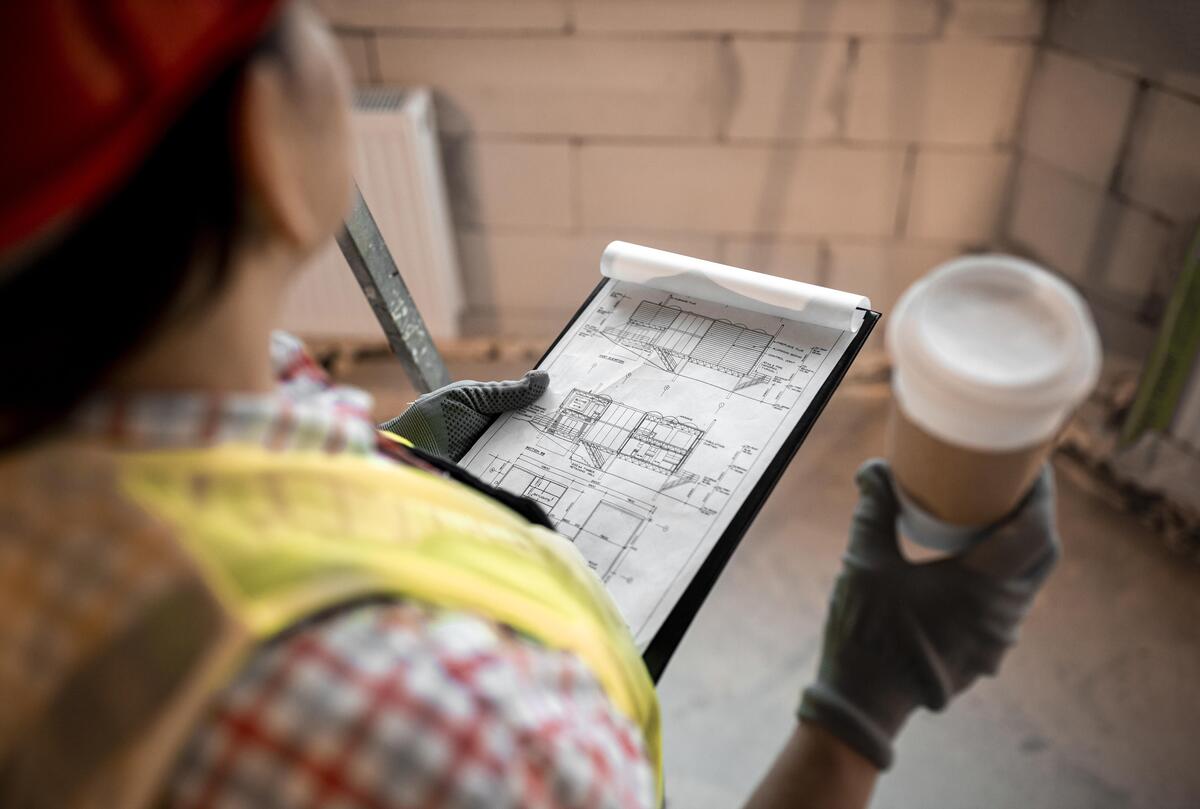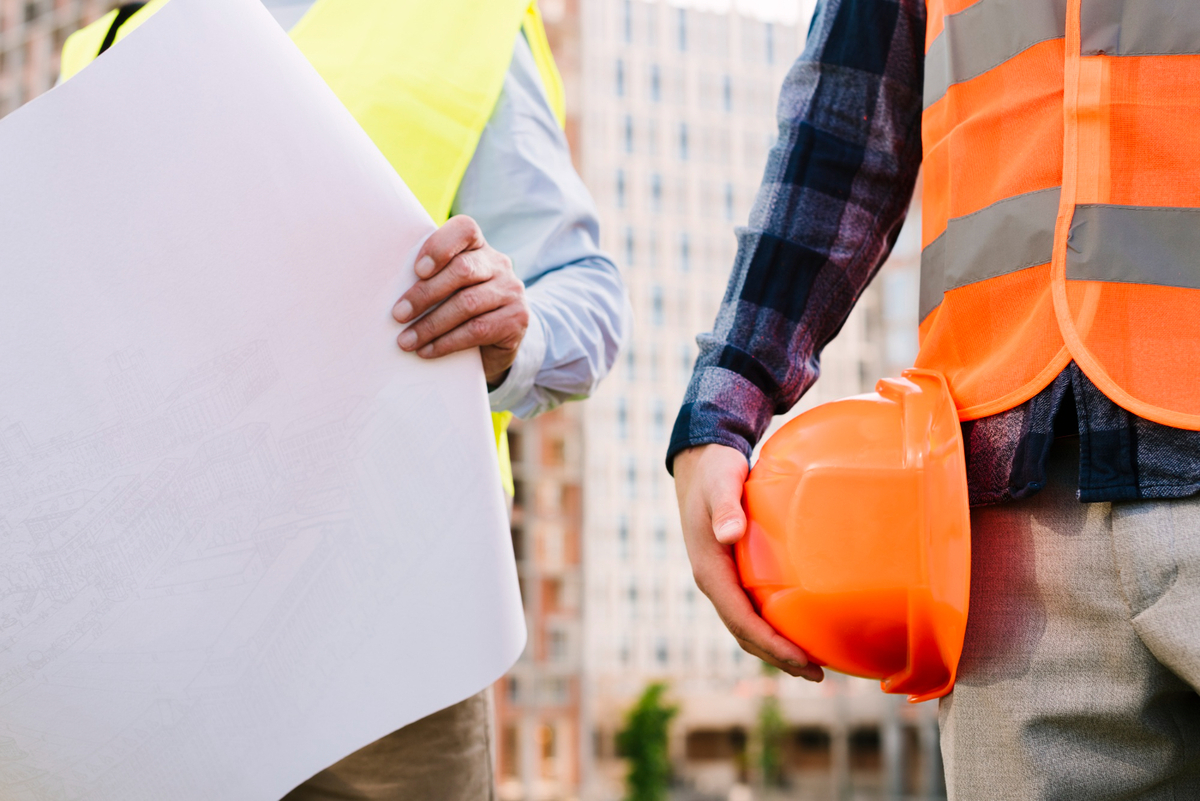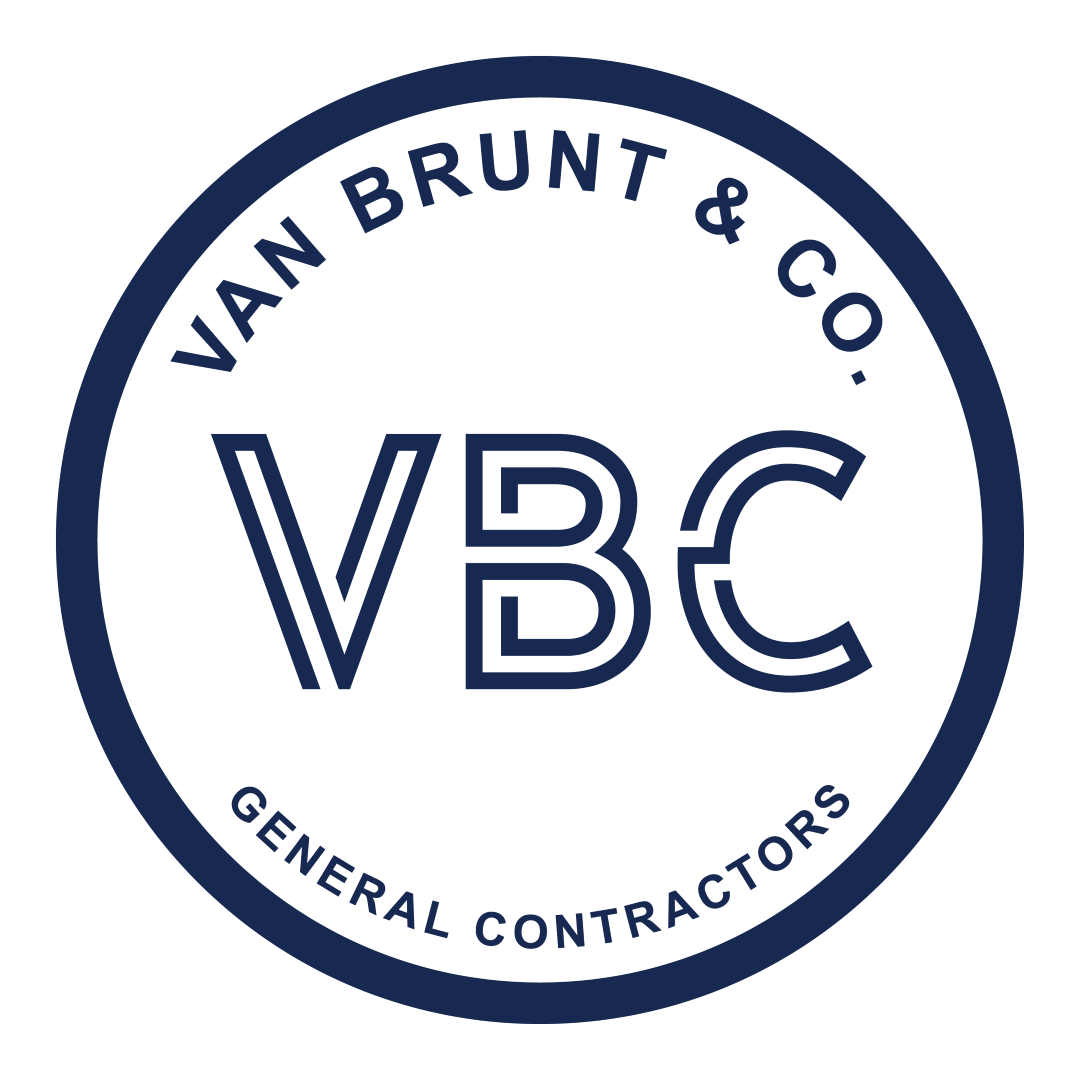When planning a commercial construction project, one of the first questions on everyone’s mind is: “How long will this take?” The answer isn’t always straightforward, as timelines vary depending on numerous factors. From the size and complexity of the design to permitting processes and unforeseen challenges like weather or material delays, each element plays a pivotal role in determining the overall duration.
In this blog, we’ll break down the key factors that influence commercial construction timelines, outline the stages of the process, and provide actionable tips to help you accelerate your project. Whether you’re planning a small retail space or a large industrial facility, understanding what to expect can make all the difference in staying on schedule.

Key Factors That Determine Commercial Construction Timelines
Understanding what influences the duration of a commercial construction project is essential before diving into specific timelines. Here are the primary factors to consider:
1. Scope and Scale of the Project
The size and complexity of a project play a significant role. Larger builds require more labor, materials, and time compared to smaller, simpler projects.
2. Complexity of the Design
Intricate architectural designs or custom features can extend timelines. These require specialized expertise, materials, and additional time for proper execution.
3. Permitting and Regulatory Approvals
Navigating the permitting process varies by location. Depending on local jurisdictions, securing the necessary approvals can take weeks or even months.
4. Weather Impact on Construction
Adverse weather conditions, such as heavy rain, snow, or extreme heat, can delay outdoor construction activities, impacting overall progress.
5. Material Availability and Procurement
Delays in sourcing materials can lead to timeline setbacks. High-demand items often face backorders, so proactive planning and ordering are critical to keeping projects on schedule.
6. Impact of Change Orders
Mid-project changes to the scope or design can significantly disrupt timelines. These changes require approval and adjustment before work can continue, often causing delays.
7. Type of Construction
Ground-up construction projects typically take longer than renovations or interior build-outs due to the foundational work required.
Partnering with Experts to Stay on Track
Working with a reliable commercial construction company like Van Brunt & Company can help minimize potential delays. With extensive experience, Van Brunt & Company ensures efficient project management, proactive problem-solving, and streamlined timelines to keep your build progressing smoothly.

Key Stages in the Commercial Construction Process
Understanding the major steps involved in commercial construction is essential for smooth project execution. Below, we outline the critical phases of the process and provide an overview of the typical timelines for each. While these stages are universal across small and large-scale projects, the specific time required may differ depending on the project’s complexity.
Pre-Construction Phase: Setting the Foundation for Success (3-6 Months)
Before any construction begins, the pre-construction phase lays the groundwork for your project. Spanning three to six months, the timeline varies depending on the project’s scale and complexity. During this stage, key activities include:
- Strategic Planning and Design Development: Collaborate with architects, engineers, and project managers to shape a detailed and actionable plan tailored to your goals.
- Land Evaluation and Site Selection: Conduct thorough feasibility studies to ensure the chosen location meets all project requirements.
- Budget Analysis and Cost Estimation: Outline a realistic budget based on the project’s scope, material needs, and labor costs.
- Permit Applications and Approvals: Navigating local regulations and securing necessary permits—a process that can extend for weeks or months, depending on jurisdictional requirements.
This preparatory phase is crucial for minimizing surprises and ensuring your project progresses smoothly from concept to reality.
Design Phase: Crafting the Blueprint for Your Vision (2-4 Months)
The design phase is a critical step where architects and engineers collaborate to bring your project to life. Spanning two to four months, this phase involves finalizing construction plans tailored to your unique vision and project needs. The timeline can vary based on the complexity and scope of the design. Key components of this phase include:
- Schematic Design: Initial sketches and conceptual drawings lay the foundation for the project’s overall look and feel.
- Design Development: Detailed plans are crafted, incorporating structural details, engineering assessments, and material selections.
- Construction Documents: Comprehensive documentation is prepared for city submittal, ensuring you’re ready to secure construction permits.
At Van Brunt & Company, we specialize in delivering personalized and efficient design solutions. Our streamlined approach ensures that your project stays on schedule while optimizing resources, all without compromising quality. Let us help turn your vision into reality.
Bidding and Choosing the Right Contractor (1–2 Months)
After finalizing your design plans, the next step is selecting a contractor. This process generally takes one to two months and involves two critical stages:
- Competitive Bidding: Licensed contractors present their proposals, allowing the homeowner to compare costs, expertise, and projected timelines. This ensures you find the best fit for your project.
- Contract Finalization: Once a contractor is chosen, both parties work together to finalize a detailed agreement. This includes setting clear expectations for the budget, responsibilities, and project timeline.
Preparing the Site: Clearing the Path for Construction (1-3 Months)
The first significant milestone in commercial construction is site preparation—a critical step that sets the foundation for the entire project. Depending on the site’s condition and project scope, this stage typically takes one to three months. Key activities during this phase include:
- Land Clearing and Grading: Clearing trees, rocks, and debris while leveling the land to create a stable construction base.
- Excavation and Foundation: Digging and laying the groundwork to ensure a durable and reliable foundation.
- Utility Connections: Installing crucial systems like water, sewage, and electrical lines to support the construction and future use.
Commercial Construction Timeline: From Blueprint to Completion (4–12 Months)
The construction phase is the heart of any building project, typically spanning 4 to 12 months depending on the complexity and scale. This stage brings your vision to life with a series of essential steps:
- Framing: The structural framework forms the backbone of the building, laying the foundation for all other components.
- Roofing: A weatherproof roof ensures durability and shields the structure from external elements.
- Exterior Work: This step involves creating the outer shell, including walls, windows, doors, and exterior finishes, blending functionality with curb appeal.
- Interior Systems: Electrical, plumbing, HVAC installations, and insulation are meticulously handled to provide comfort and utility.
- Finishing Touches: The final phase includes adding interior details like drywall, flooring, and painting to perfect the space.
The duration of commercial construction depends on variables such as weather conditions, material availability, and the efficiency of the construction team. At Van Brunt & Company, our seasoned professionals prioritize precision and timeliness, ensuring a seamless process while minimizing delays.
Inspection and Quality Assurance (1-2 Months): Ensuring Your Building Meets Every Standard
After construction wraps up, the building undergoes a comprehensive inspection phase to confirm it complies with all safety regulations and building codes. This process typically spans one to two months and includes the following steps:
- Local Authority Inspections: Experts from local authorities conduct thorough checks, assessing fire safety, structural integrity, and overall code compliance.
- Punch List Review: Any remaining minor issues or adjustments are addressed by the contractor to ensure everything is in perfect order before approval.
- Final Approval & Occupancy: Once all inspections are complete and any corrections made, the building is granted final approval, and an occupancy certificate is issued.
Post-Construction (1-2 Months): Wrapping Up and Preparing for the Future
Even after construction is finished and the building is ready for use, there are essential tasks left to complete during the post-construction phase, typically lasting one to two months. These final steps ensure everything is in place for long-term success:
- Final Inspection: The project owner performs a final walkthrough with the contractor to verify that the work is completed as promised and meets expectations.
- Warranty Coverage: The contractor provides warranties covering both the building and materials, giving peace of mind for the future.
- Routine Maintenance:: A maintenance plan is often established to keep the building in optimal condition, ensuring its longevity and value.

Typical Timelines for Commercial Construction Projects
The duration of commercial construction projects depends significantly on the type and complexity of the build. Below is a breakdown of average completion times for various types of commercial projects:
Small Retail Spaces (4-6 Months)
Compact commercial projects, such as retail stores or restaurants, are generally completed within a few months due to their smaller size and straightforward designs.
Office Buildings (8-18 Months)
Medium-scale projects, like office buildings, often require more time. The construction period varies based on the height of the structure, number of floors, and unique design requirements.
Large Warehouses or Industrial Facilities (12-24+ Months)
Expansive projects, including warehouses, industrial plants, and hospitals, demand significant time due to their size and technical complexity. These builds typically span 1.5 to 2 years or more.
This timeline can fluctuate based on location, permitting, and the intricacy of the project.
Accelerate Your Commercial Construction Timeline with These Expert Tips
The commercial construction process often feels like a lengthy journey, but with the right strategies, you can significantly speed it up. Here’s how to keep your project moving efficiently from start to finish:
1. Embrace the Design-Build Model
Streamline your construction process by opting for a design-build approach. In this method, a single team manages both the design and construction phases, eliminating delays caused by miscommunication or handoffs between separate entities.
2. Prioritize Effective Project Management
Strong project management is critical for keeping timelines on track. By establishing clear schedules, facilitating open communication, and quickly addressing potential roadblocks, you can minimize unnecessary delays.
3. Leverage Modular Construction
For projects where it makes sense, modular construction is a game-changer. Pre-fabricating building components off-site allows for simultaneous workstreams, cutting down on time spent on-site and expediting project completion.
4. Maintain Active Engagement
Your involvement is essential. Schedule regular updates with the construction team, swiftly address issues as they arise, and avoid last-minute changes to prevent disruptions to the timeline.
At Van Brunt & Company, we bring unmatched expertise as leaders in commercial construction. Our proven ability to navigate complex challenges ensures that we deliver projects on schedule and within budget—without compromising on quality. Trust us to bring your vision to life, efficiently and effectively.

How to Choose the Right Team for Your Commercial Project?
Selecting the right team for your commercial project is one of the most critical decisions you’ll make. The right team doesn’t just complete your project—they ensure it’s done efficiently, on time, and within budget. But how do you ensure you’re making the right choice? Here are some essential considerations to help you make an informed decision.
Key Questions to Ask Before Hiring
Before committing to any contractor or project team, it’s important to ask the right questions. Start by evaluating their credentials: Are they licensed, bonded, and insured? This ensures you’re working with professionals who meet industry standards and provide a level of financial protection in case of unforeseen circumstances. Next, ask about their track record with similar projects. Have they successfully completed projects of the same scope and complexity? Requesting references and viewing past work can give you valuable insights into their expertise and reliability.
Additionally, inquire about their project management process. How do they plan to keep the project on track? Do they have a dedicated point of contact for regular updates? Understanding their communication style and organizational methods will help you gauge whether they’re a good fit for your working style and expectations. Finally, clarify their timeline and budget estimates. Are their proposed deadlines realistic? How do they handle unexpected costs or delays? These questions can help you identify potential red flags before signing a contract.
The Role of Experience in Minimizing Delays
Experience plays a pivotal role in the successful execution of a commercial project. An experienced team not only understands the technical aspects of construction but also anticipates potential challenges before they arise. This proactive approach can save you significant time and money in the long run. For example, seasoned contractors are familiar with permit processes, zoning laws, and other regulatory requirements, ensuring that your project complies with local regulations and avoids costly delays.
Moreover, experienced professionals have established relationships with suppliers and subcontractors, which can streamline procurement and scheduling. They’re also more adept at problem-solving, which is invaluable when unexpected issues emerge on-site. By choosing a team with a proven track record, you’re investing in a smoother, more predictable project timeline.
Importance of a Strong Contractor-Client Relationship
A successful commercial project relies heavily on a strong contractor-client relationship. Open and transparent communication forms the foundation of this relationship. From the outset, both parties should establish clear expectations regarding goals, timelines, and responsibilities. Regular check-ins and progress updates help ensure everyone remains aligned and any concerns are addressed promptly.
Trust is another critical element. When you trust your contractor, you can focus on the bigger picture instead of micromanaging every detail. This trust is built through consistent reliability, honesty, and a shared commitment to the project’s success. A strong relationship also fosters collaboration, making it easier to adapt to changes or challenges as they arise.
Ultimately, the right team is more than just a group of skilled professionals—it’s a partnership built on mutual respect and shared goals. By taking the time to choose carefully and prioritize communication, you’ll set the stage for a successful commercial project.
Conclusion
Commercial building construction is a complex process influenced by numerous factors, from the size and design of the project to permitting, material availability, and unforeseen challenges. By understanding the stages involved, planning proactively, and partnering with experienced professionals, you can streamline your project and minimize delays.
At Van & Brunt Company, we specialize in commercial building construction and remodeling, delivering projects on time and within budget. Our team’s expertise ensures a seamless process, from pre-construction planning to final inspections. Whether you’re embarking on a small-scale build or a large industrial facility, Van & Brunt Company is here to turn your vision into reality. Contact us today to begin your next commercial project.
FAQs
How can I speed up my commercial construction project?
Opt for the design-build model, ensure proactive planning, and maintain open communication with your contractor. Experienced teams like Van & Brunt Company also play a significant role in avoiding unnecessary delays.
What are the key phases of a commercial construction project?
The process typically includes pre-construction, design, bidding, site preparation, construction, inspections, and post-construction. Each phase has unique requirements and timelines.
How long does it take to build a small retail space?
Small retail spaces often take 4-6 months, depending on the design complexity and permitting requirements.
What is the average timeline for constructing an office building?
Office buildings generally take 8-18 months to complete, with timelines varying based on height, floor count, and design intricacy.
What factors most commonly delay commercial construction projects?
Delays can result from permitting issues, material shortages, unexpected weather conditions, and mid-project change orders.

